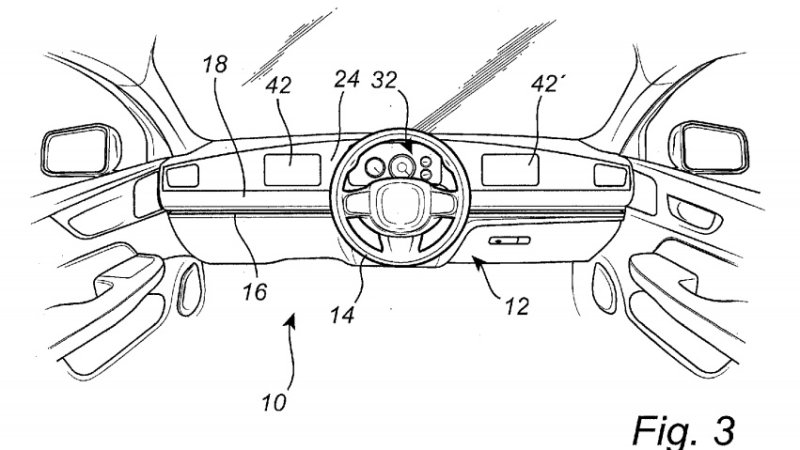Volvo is using by-wire technology to develop a system that allows the steering wheel, instrument panel and a variety of switches to slide from one side of the cabin to the other. It’s a clever invention that turns the definition of the driver’s seat upside down, and the Swedish company recently got a patent for it.
The patent, published in September 2020, describes a “vehicle with multiple driving positions” thanks to a steering wheel mounted on a rail that extends the entire width of the cab. That means the driver can sit on the left side of the car, as in most countries, or on the right, as in Australia, England and Japan, among others. Strangely enough, someone could even choose to sit in the middle of a front seat.
Looking ahead, Volvo added that by sliding the steering wheel out of the way, users have more space when traveling in a semi-autonomous car. For example, if you’re stuck in traffic, you can knock the steering wheel out of the way and read a book while a well-equipped car drives the bottleneck on its own. It’s much simpler and cheaper than designing a concept-car steering wheel that retracts into the dashboard.
For this technology to work, all vehicle controls would have to be replaced with by-wire components; it’s not as science fiction as it sounds. Infiniti has mainly been using steer-by-wire technology for years, and brake-by-wire is slowly spreading across the automotive industry. Wire acceleration is so common it’s commonplace. The digital instrument cluster and the various light-related steering wheel buttons could simply move with the steering wheel.
As for the pedals, Volvo explained that they could be replaced with pressure sensitive pads, hydraulically or pneumatically operated sensors or something completely different. Either way, they would be installed in both front foot wells and the system would automatically activate the one on the side of the wheel.
Volvo has not commented on the patent, and it certainly has not announced any plans to put the technology described in the documents into a regular production car in the near future. It’s a cool feature, but it’s important to keep in mind that it often takes years for something described in patent applications to reach showrooms. What remains to be proven is that designing this system for mass production and getting it approved by regulators around the world would cost less than building different cars for right and left hand drive markets.
Splitting the difference
Car manufacturers have often tried to find a way to eliminate the need to produce left- and right-hand drive cars, or at least make the conversion as cost-efficient as possible. Part of the reason the original Mini’s speedometer was installed in the center of the dashboard instead of behind the wheel was because it could stay there no matter where the driver was sitting. It was later placed in front of the driver, but returned to center in the first BMW-developed model released in 2000. McLaren’s groundbreaking F1 placed the driver front and center for a variety of reasons: improved visibility, better driving position and no market-specific layouts.
Related video:
